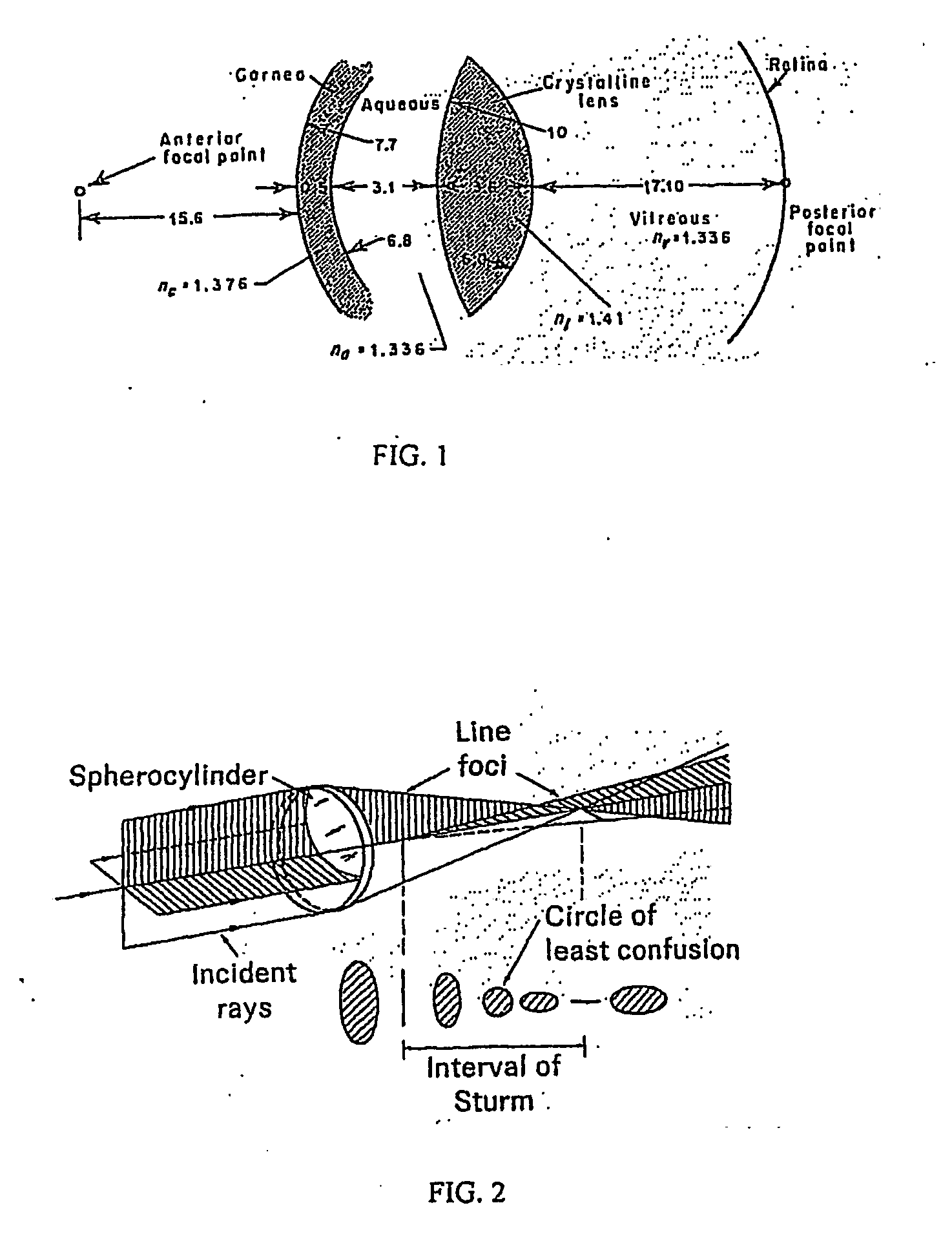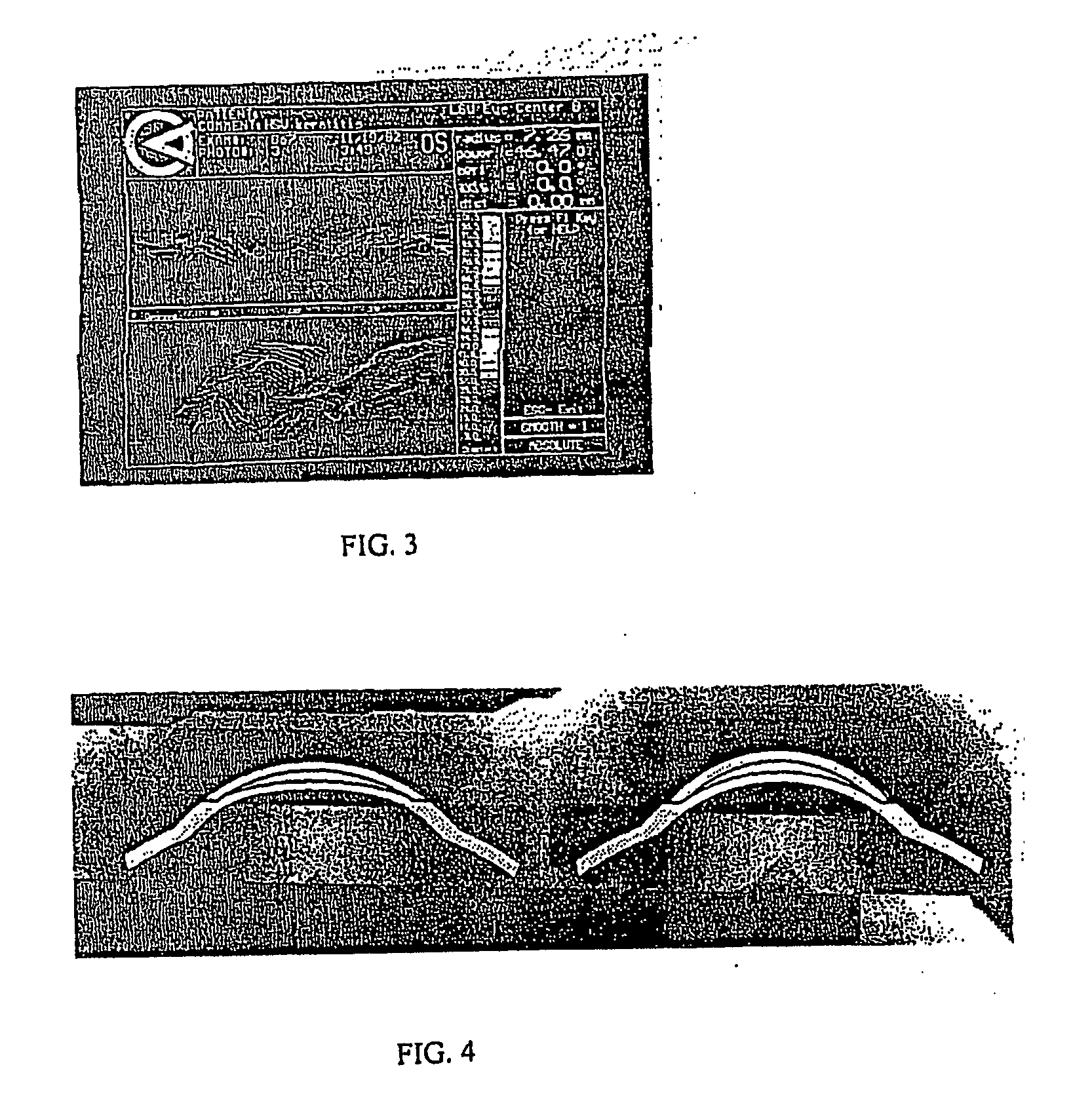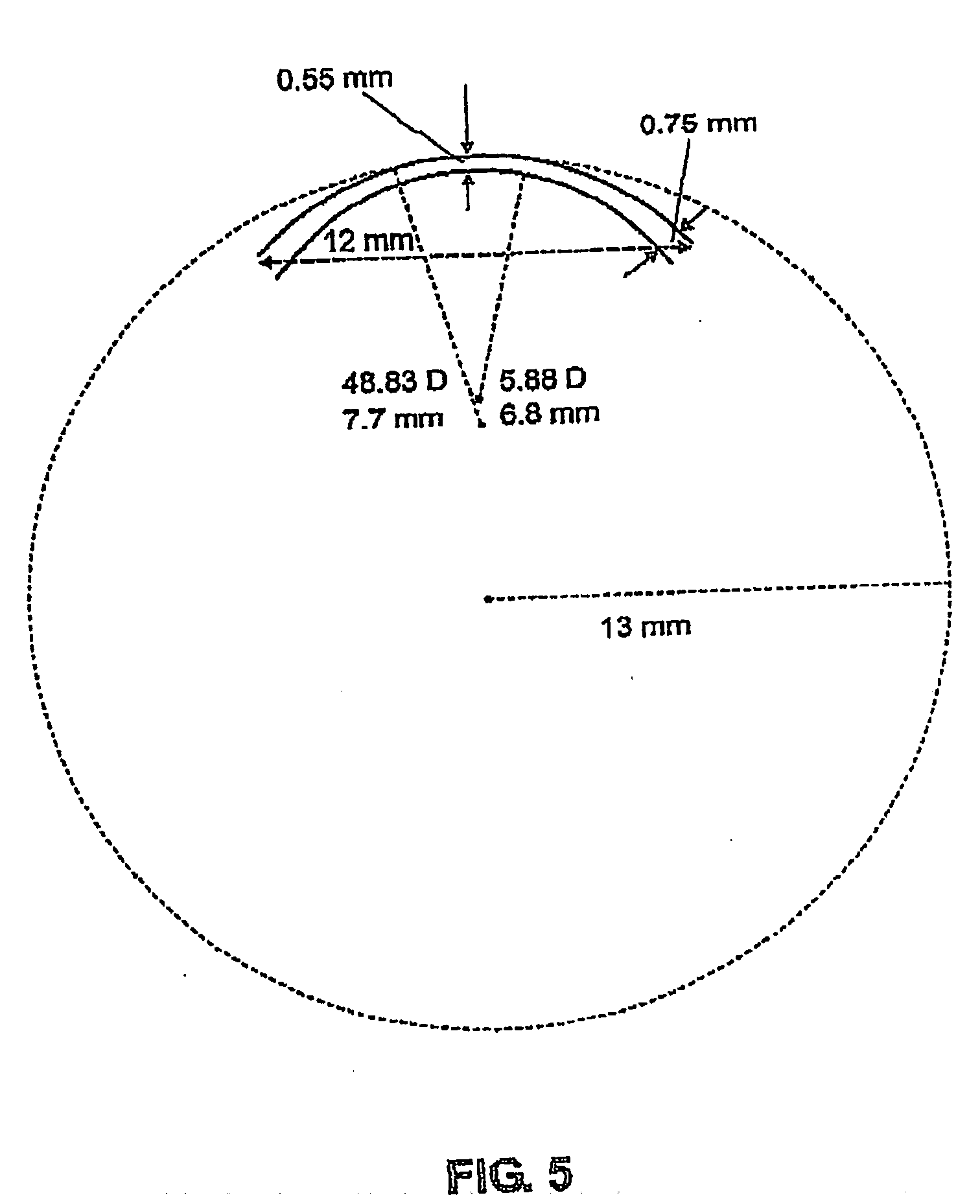Treatment of ophthalmic conditions
a technology for ophthalmology and ophthalmology, which is applied in the field of treatment of ophthalmology, can solve the problems of increasing the risk of infection or other complications, small, or even moderate amount of refractive error after, and not allowing one to achieve the desired vision, so as to reduce the incidence of undesired side effects, improve the change of corneal curvature, and facilitate the ophthalmology
- Summary
- Abstract
- Description
- Claims
- Application Information
AI Technical Summary
Benefits of technology
Problems solved by technology
Method used
Image
Examples
Embodiment Construction
[0039] The present treatment system is based on inducing a change in the curvature of the cornea (e.g., the anterior radius of the cornea). The change allows the patient to see better near and far without the need for eyeglasses, contact lenses, or other visual aids. The system works by inducing a compound myopic astigmatism with a vertical axis (horizontal or oblique) according to the visual needs of the patient being treated. The system is interactive and depends on input from the patient on how the treatment is to proceed. This is one of the differences between the inventive system and those already known in the art that essentially rely on detailed measurements of aspects of the eye by an ophthalmologist.
[0040] The methods used to induce changes in the anterior radius of the cornea include wearing molding contact lenses after refractive surgical techniques such as LASIK, LASEK, PRK, CK, or other surgical procedures that alter the anterior layers of the cornea or the sclera or a...
PUM
| Property | Measurement | Unit |
|---|---|---|
| Fraction | aaaaa | aaaaa |
| Fraction | aaaaa | aaaaa |
| Fraction | aaaaa | aaaaa |
Abstract
Description
Claims
Application Information
 Login to View More
Login to View More - R&D
- Intellectual Property
- Life Sciences
- Materials
- Tech Scout
- Unparalleled Data Quality
- Higher Quality Content
- 60% Fewer Hallucinations
Browse by: Latest US Patents, China's latest patents, Technical Efficacy Thesaurus, Application Domain, Technology Topic, Popular Technical Reports.
© 2025 PatSnap. All rights reserved.Legal|Privacy policy|Modern Slavery Act Transparency Statement|Sitemap|About US| Contact US: help@patsnap.com



